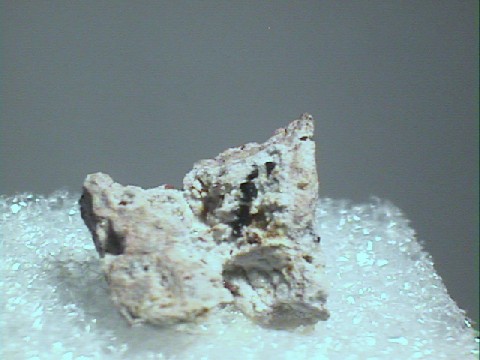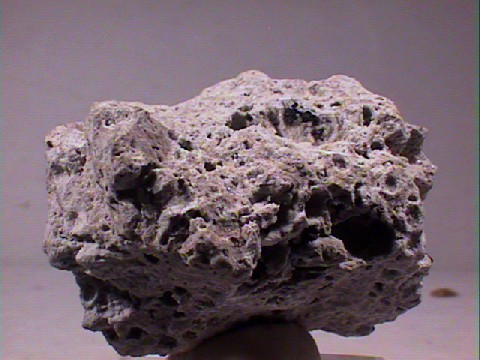 THE MINERAL OSUMILITE
THE MINERAL OSUMILITE
- Chemistry: (K, Na)(Fe, Mg)2(Al, Fe)3(Si, Al)12O30 - H2O, Hydrated Potassium Sodium Iron Magnesium Aluminum Silicate.
- Class: Silicates
- Subclass: Cyclosilicates
- Group: Milarite - Osumilite
- Uses: Only as mineral specimens.
Specimens
The primary structural unit of osumilite is a most unusual double ring, with a formula of Si12O30. Normal rings of cyclosilicates are composed of six silicate tetrahedrons; Si6O18. The double ring is made of two normal rings that are linked together by sharing six oxygens, one from each tetrahedron in each six membered ring (notice the loss of six oxygens in the double ring formula). The structure is analogous to the dual wheels of a tractor trailer.
Osumilite is a rare mineral and yet it is one of the two minerals that gives its name to a somewhat large group of silicates, namely the Milarite - Osumilite Group. This group is sometimes called the Milarite Group and sometimes called the Osumilite Group and of course, as is done here, the Milarite - Osumilite Group. The group is composed of similar cyclosilicate minerals that are all rare and very obscure with the exception of osumilite, milarite and sugilite. All members of this group contain in their structures the unusual double ring mentioned above.
Osumilite is in a series with a similar mineral called Osumilite-(Mg). A series is where two or more minerals having the same structure will vary their chemistry between two elements. One mineral is enriched in one element and the other mineral is enriched in the other, with all other elements in the formula staying largely unaffected. In this case osumilite is the iron rich end-member of the series and the appropriately named osumilite-(Mg) is the magnesium end member. Both minerals contain some magnesium and iron anywise, but they are distinguished by an enrichment of either iron or magnesium. Osumilite has been suggested to be named osumilite-(Fe) which would seem unnecessary unless a third mineral that is more pure in iron is established and osumilite could represent the middle of the series.
PHYSICAL CHARACTERISTICS:
- Color is blue, pale blue, gray, pink, brown to black.
- Luster is vitreous.
- Transparency: Crystals are translucent to rarely transparent.
- Crystal System is hexagonal; 6/m 2/m 2/m.
- Crystal Habits include prismatic crystals with a pinacoidal termination.
- Cleavage is absent.
- Fracture is subconchoidal.
- Hardness is 5 - 6
- Specific Gravity is approximately 2.6 - 2.7 (average)
- Streak is blue-gray.
- Associated Minerals:
Magnetite,
hematite and
pyroxenes . - Notable Occurrences include the type locality for osumilite which is Sakurazima Mountain, Sakkabira (Osumi), Hayasaki, Kyusyu, Japan and the type locality for osumilite-(Mg) of Tieveragh, Antrim County, Northern Ireland as well as MacKenzie Pass, Lane County, Oregon, USA; Namaqualand, South Africa; Sardinia, Italy and Eifel District, Germany.
- Best Field Indicators are hardness, color, luster and environment.




